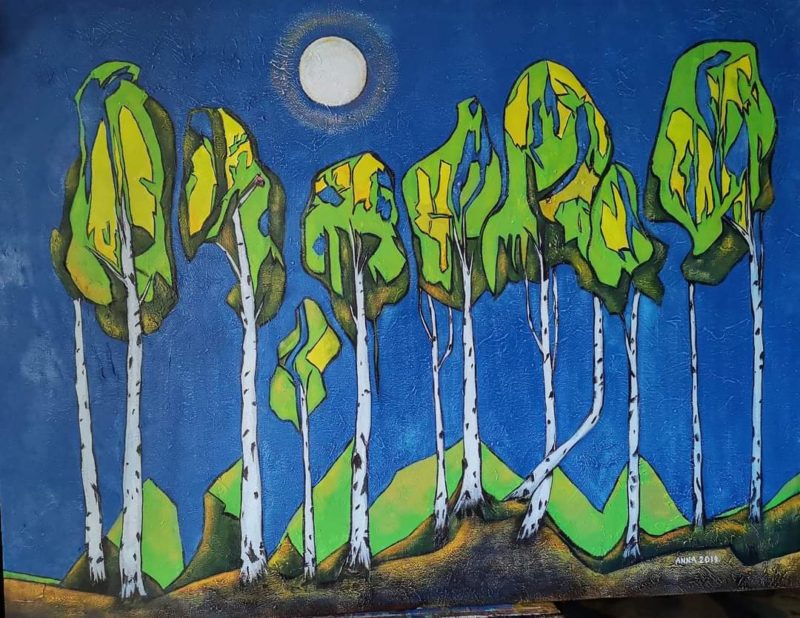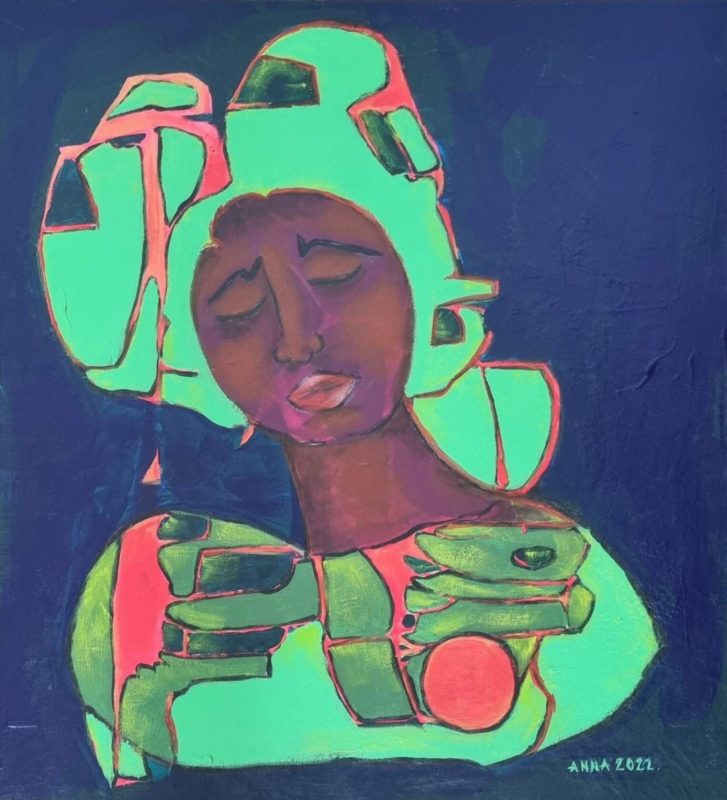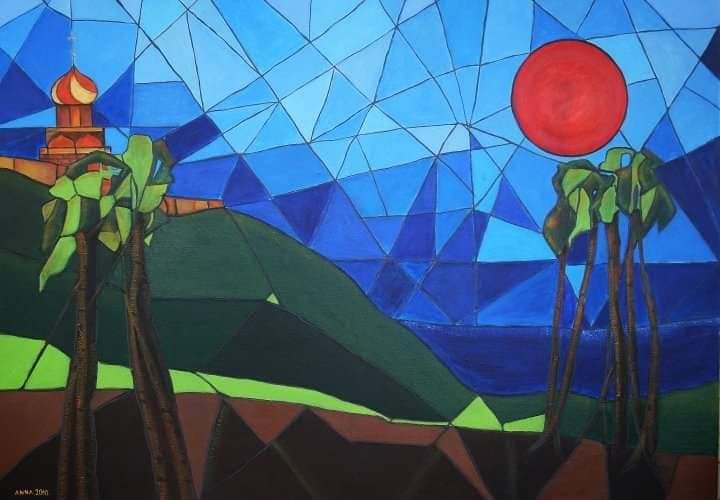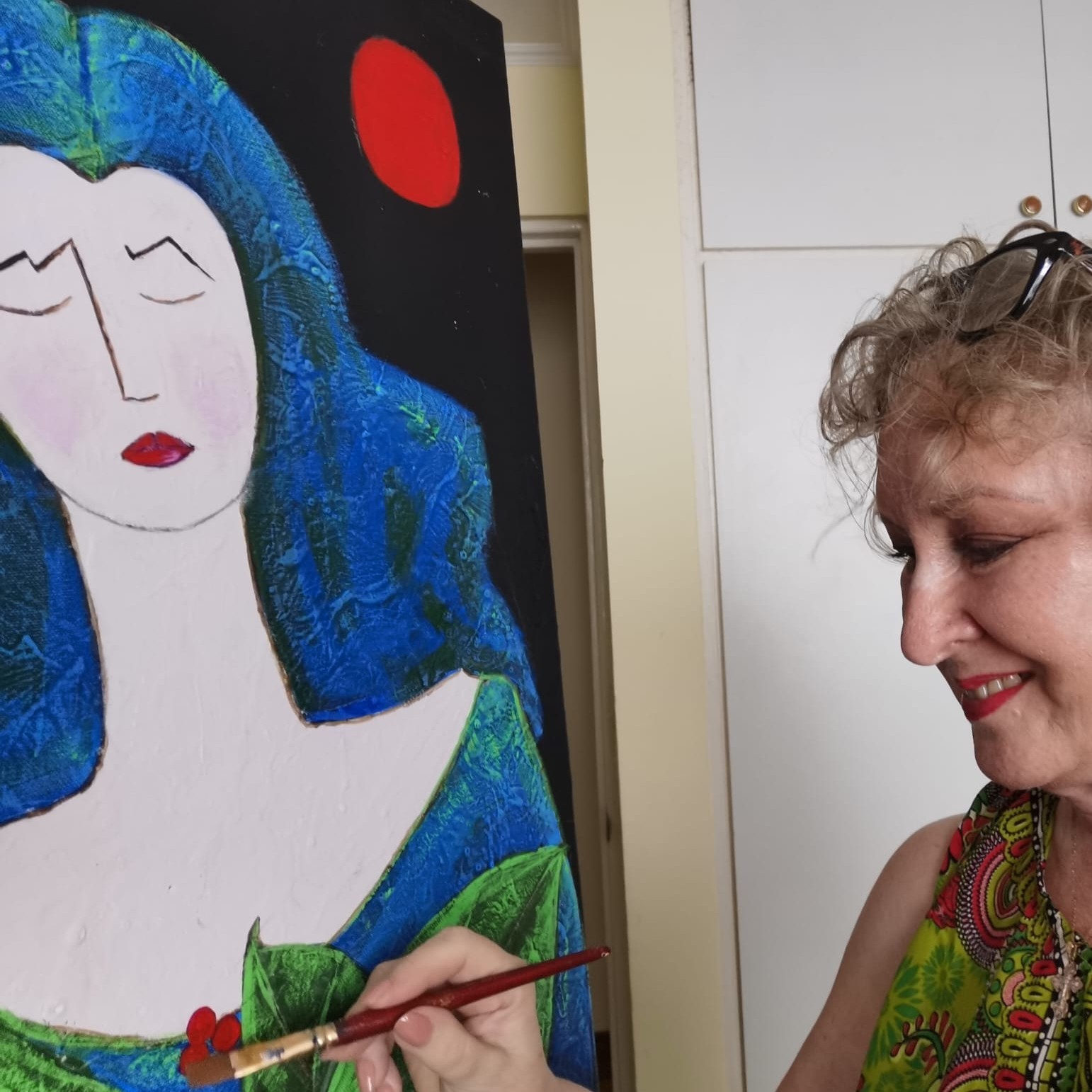Anna Goncharova is a Panamanian artist of Russian origin. After many years in medicine, she turned to art and still combines art and science. Her career as an artist has been a success: in 2011, she was named Artist of the Year in Panama. Fine Art Shippers spoke with Anna Goncharova about her unconventional career path, life in the tropics, and homesickness.
Artist Talk: Anna Goncharova on Expatriation and Learning Other Cultures
You have taken an unusual creative path: you are a practicing physician and artist. In which medical field do you specialize?
Anna Goncharova: I graduated in epidemiology about thirty years ago in the then-Soviet Union. I met my future husband in medical school and moved to Panama shortly after graduation. In Panama, I had to change my specialty because at that time, preventive medicine there was organized differently than in my country. So I decided to work as a general practitioner in the public health system, and I have been doing that for more than twenty-seven years now.
How did you adapt to a new country and culture?
Of course, Russia and Panama are very different: in size, climate, traditions, and habits. I told myself from the beginning that I came here for personal reasons, not because they invited me. So I had to learn their language and way of life and understand their culture and mentality. It wasn't easy, but I never felt uncomfortable or unwelcome. As Panama is a multinational country, the people here are very friendly towards foreigners. I learned Spanish quickly and started working a year after I arrived. Since then, it has been my home and my family’s.

How would you characterize the Panamanian mentality?
That is a difficult question. As I mentioned, the Panamanians are very friendly, warm people. I have made many good friends. That being said, a lot depends on the person, their background and education, and the opportunities to travel and see other countries and places. A person living in poverty in a remote rainforest and raising ten children has one mentality. A city resident with higher education and enough means to live and travel has another mentality.
Let's talk about how you got into art. Did you receive any formal training?
It happened about seven years after I moved to Panama. I always wanted to go to art school. My father was very good at drawing. He would often readme all kinds of stories and draw their characters. For me, that was like magic; I loved it. My mother was a nurse, my sister is a nurse too, so I was also very interested in medicine. Eventually, I decided to study medicine, which I don't regret for a moment. But at the same time, I still dreamed of going to art school. So after I settled in Panama, I decided to attend an art school. I am very grateful to my teachers for everything I learned from them.

How can you combine medicine and art? These fields are still very different.
I think there is no contradiction between the two, art and science always go in parallel. Before, my medical colleagues were surprised to see me in an art gallery, while many artists didn't know I was a doctor. But over time, everyone has gotten used to it.
So how do you divide your time between your work in the clinic and painting?
I am at the clinic in the morning and early afternoon; the workday here starts at 7 am. So I can devote the rest of the day to my art. Of course, I don't paint every day, it depends on inspiration – I think many artists would understand me. Sometimes my hands are just burning to paint an idea I have in my head, and I work non-stop for several days. Other times I start a painting, but then realize I'm not completely satisfied with it and put it aside for days or even weeks. It happens that I end up creating something completely different, painting over an original picture.

How would you describe your style? What kind of subjects attract you?
My paintings are half abstract and half figurative. I think the fact that I live in a tropical country with its bright sun and the two oceans has influenced my color palette and overall mood. When I was still in my second year of art school, I met the famous Panamanian artist Raul Vazquez at my first solo exhibition. Talking about my art, he said that I painted like a Latin American, not a Russian. But even after so many years in Panama, I am still homesick, and that's reflected in my work through the motifs of birch trees, golden domes, sunflowers, and the like. So I would say my art is a mixture of two cultures.
You also worked as a gallery director for many years. What insights into art did you gain from that?
The constant exchange with artists has certainly enriched me and broadened my horizons. It also made me understand how important it is to find your own way and style in art. Some artists would bring copies of world-famous artists like Dali or Picasso to the gallery. When asked why they made copies, they replied, "You have to learn from the masters." But that's not how it works. That's true, you should learn from those who came before you, but the key is to be original. You have to be yourself –only then will you be interesting as an artist.
Photo courtesy of Anna Goncharova
